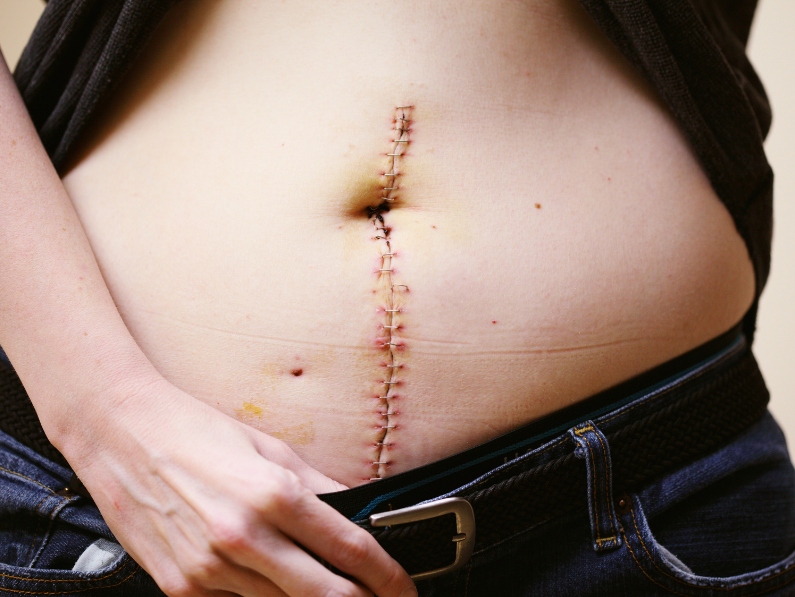How can you eliminate dairy from your diet? You may find yourself wondering this if you’re struggling to manage chronic inflammation and pain. Chronic pain and inflammation is a common symptom of many chronic conditions and autoimmune disorders. Additionally, there are studies that suggest dairy may be pro-inflammatory. This makes consuming dairy with an inflammatory condition a bad idea. Especially since dairy may increase flare-ups chronic pain and inflammation. Working with your medical professional and experimenting with a dairy-free diet may help with easing these symptoms.
Page Contents
Questions to Ask Yourself
When you’re planning on eliminating an entire food group you should have a firm idea as to why you’re doing so. Start by asking yourself why this dietary change is so important for you. Is this a genuine change that is going to have a positive impact on your current state of health? Will this switch in eating styles be healthy for you and does your medical professional approve? Getting answers to these questions should be your first step.
Key reasons that you and many others desire to eliminate dairy are due to
- Allergies
- Pain management and to decrease inflammation
- Digestive health and food intolerances
If you experience an allergic reaction whenever you consume dairy eliminating dairy from your diet is going to be beneficial for your overall health. Managing a chronic condition where pain and inflammation are issues is also a reason you might seek to remove dairy from your diet. Some find that dairy can trigger an inflammatory response within the body and therefore cause an increase in chronic pain. Relief can be achieved by limiting or eliminating dairy altogether from your diet.
Dealing with digestive issues where your body fails to break down dairy properly can cause uncomfortable symptoms. You may find that you experience bloating, gas, or loose watery stools when you consume dairy products. Sufferers of Irritable Bowel Syndrome (IBS) and Inflammatory Bowel Disease (IBD) realize fairly quickly that dairy is a trigger food that must be avoided in order to properly manage symptoms.
What’s Realistic?
While you may be all fired up to throw all the dairy products out of your fridge. I want you to pause for a minute. This may feel like the perfect way to transition into moving away from dairy products but it’s not. For starters, you’re creating a lot of waste by randomly throwing away perfectly good food products. Secondly, quitting dairy cold turkey and jumping headfirst into a dairy-free diet can be stressful if you don’t take the time to ease yourself into it.
Take the time to find out what works best for you and your needs. What does a dairy-free diet look like for you realistically? Does it mean that you should completely eliminate dairy because of a food allergy? Perhaps you find that there are certain dairy products you can consume and others you can’t. Or you may find that you can only have a certain amount of dairy products per day before it triggers an unpleasant response within your body.
Start by keeping a food log or food journal and tracking how your body reacts to different types of dairy and different amounts. Also, make sure to track different recipes that include dairy ingredients and how this affects you. After you have gathered this information you can begin to determine what your relationship with dairy will be.

Start the Transition
Limiting Dairy-Based Food Triggers
Reflect back on your food journal and identify foods that caused symptoms or allergies. Make a list of these food items and eliminate them. Look for alternatives to these items and slowly begin to phase them into your diet. For instance, I can not tolerate milk or ice cream it causes my IBS symptoms to flare up. So I swapped regular milk for lactose-free milk or I may opt to use coconut milk. Work your way through removing these trigger foods over the 3-week period. Understand what tweaks need to be made to meals, dishes, and recipes to adhere to this new dietary style.
Remove All the Dairy
For those of you that need to go dairy-free, you will spend your first-week eliminating food triggers as needed. The last two weeks will be dedicated to removing all remaining dairy foods from your diet. This includes any recipes, dishes, boxed goods, treats, and foods that are made with dairy. Your focus will be on learning more about meals that are dairy-free. Before you start your transition make sure you spend time creating a list of recipes and foods that you want to try. Even going so far as trying them out in advance to see if it is something you will enjoy. This gives you the opportunity to discover what you like and what you don’t like so your transition process can go quicker and be more sustainable for you.
Making it Sustainable
Everything is fun and new in the beginning but can be a bit more of a challenge to adhere to and stick with in the future. Especially when it comes to sticking to a dairy-free diet outside of your home. Here are some quick tips on how you can adhere to your new dietary style.
Know Your Options
The biggest thing is to know what is available for you. I am always amazed at how many lactose-free and dairy-free options are available at the grocery store. Before I cut back on my dairy consumption I thought it would be impossible to enjoy nachos ever again. FALSE! Spend time before you start your transition doing the research and learning more about these different products and options. You have choices that are probably right in front of your nose.
Cut the Lactose
Start with just removing lactose from your diet and consume foods that are lactose-free or that contain a very minimal amount of lactose. You may find that this may eliminate symptoms for you. Lactose is a key trigger for many people, including myself. This is due in large part to the stomach not producing enough of the lactase enzyme which is needed to properly break down lactose. You may think you need to eliminate all the dairy but just need to omit the dairy products that have high amounts of lactose. You won’t know until you experiment and journal and track how your body responds.
Look for Alternative Options
Think you’ll never be able to enjoy a cup of yummy coffee with a caramel creamer. Wrong. There are alternative non-dairy options out there just waiting for you to discover them. From nut-based milk and creamers, coconut milk, the list could go on. Just a quick browse through Pinterest will lead you to find some amazing dairy-free recipes that can serve as swaps to your favorite meals and dishes. This is also true for restaurants as well. There are more restaurants that offer dairy-free options or special dishes for those that can not eat dairy. A quick google search may reveal places you can go to and enjoy a nice meal. Looking into and trying these options can help prepare you for your transition and make it something that you can easily manage and keep up with.
Digestive Enzymes are Your Friend
Let’s be honest sometimes you want to be normal just like everyone else and just enjoy a cheeseburger, or ice cream without feeling left out. Keeping digestive enzymes nearby especially lactase enzymes can help you navigate those uncharted waters that you find yourself in. This takes the stress of having to perform mental calculations of each food item that you eat and gives you more freedom to just enjoy life.
What’s Important
The most important thing for you to remember during this process is that you have options when it comes to how much dairy you will or won’t consume. Unless you have a severe food allergy or health condition that requires that you remove all dairy from your diet you can take your time to determine what will work best for you. Make sure you work with your medical professional to determine what’s right for you and take it from there. Whether that means you only focus on removing food triggers or you remove all the dairy. It’s totally up to you.
About the Author.

Hi, my name is Kathleen but you can call me Kat. I am an Esthetician, Lifestyle Wellness Coach, Content Creator, and Writer. My intention is to provide you with education and awareness about women’s health, nutrition, fitness, beauty, wellness, and lifestyle. I primarily help women that are seeking holistic and natural solutions to managing their chronic condition, improving their lifestyle and combating anti-aging concerns. I offer coaching programs and courses that are designed to help you redefine your health and defy aging. You can find my content on a variety of social media platforms such as YouTube, Facebook, and Instagram.
If you take the opportunity to visit me on my other platforms don’t hesitate to leave a message, I would love to hear from you!






